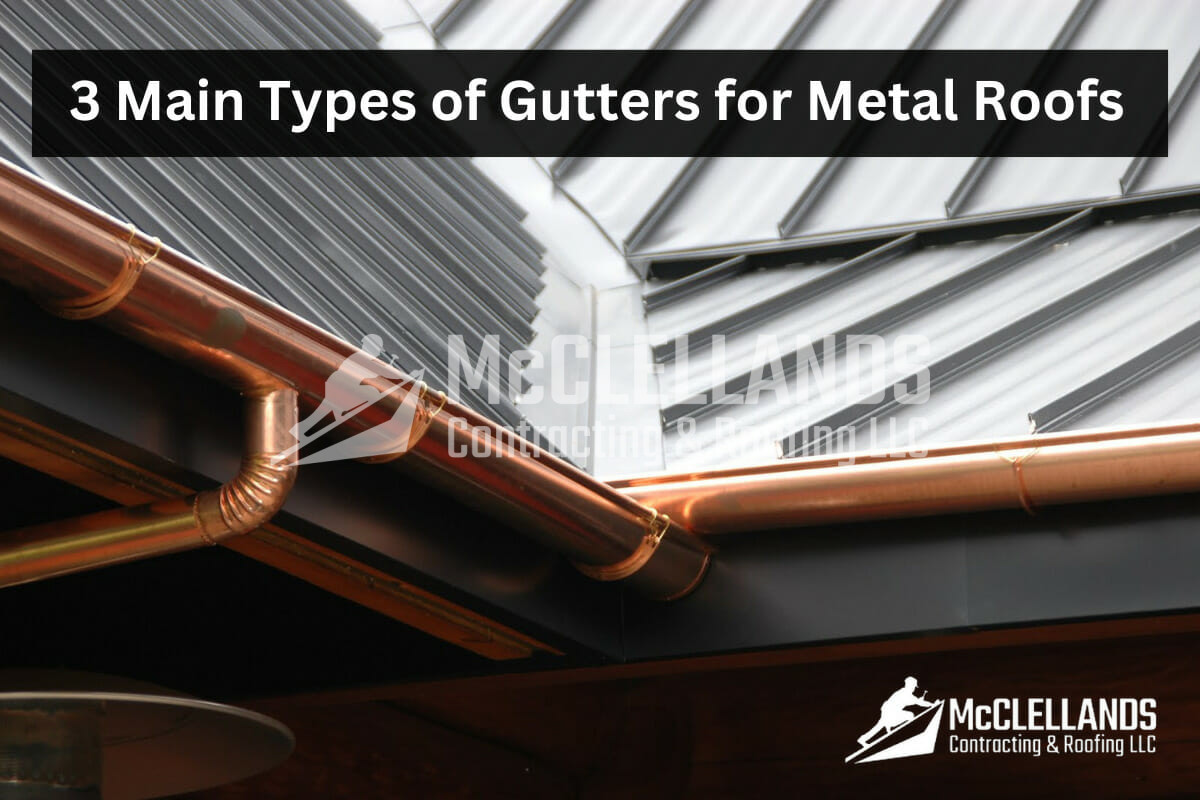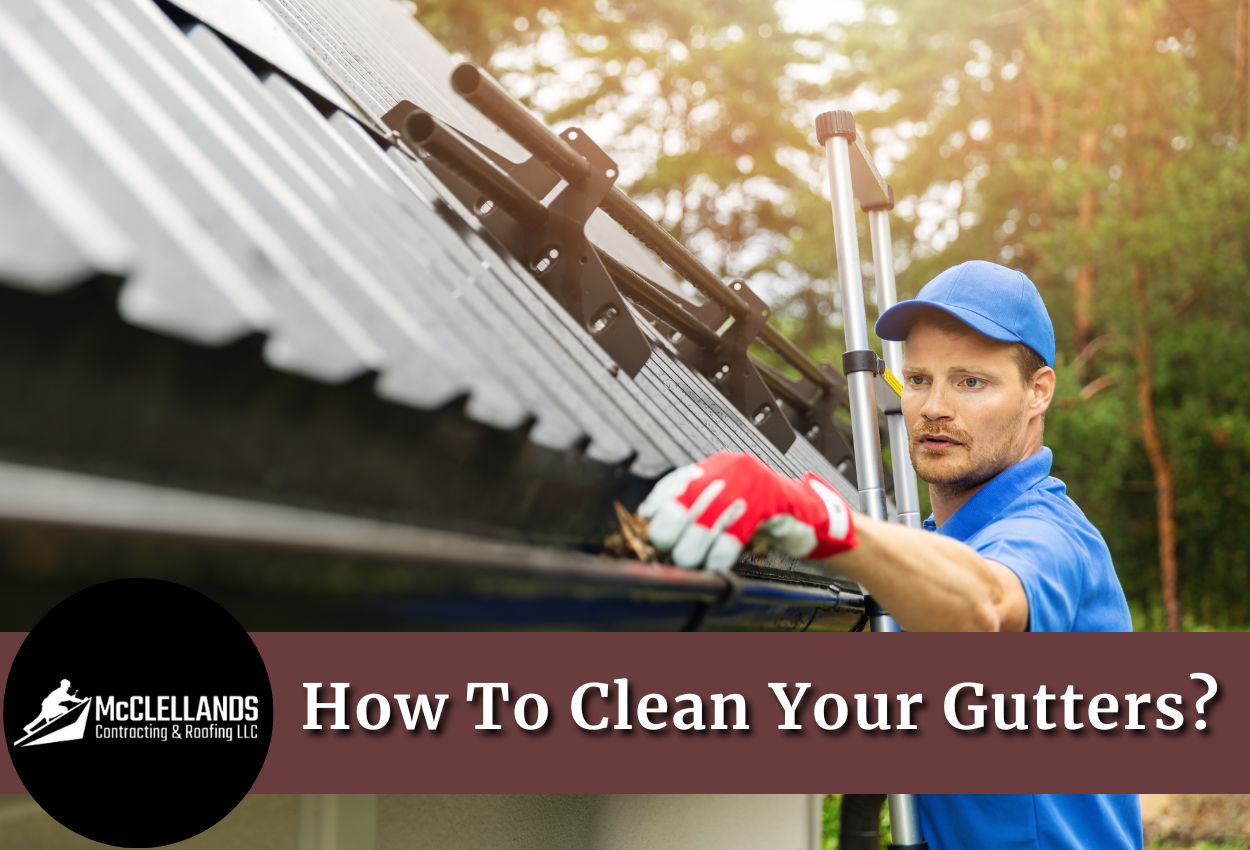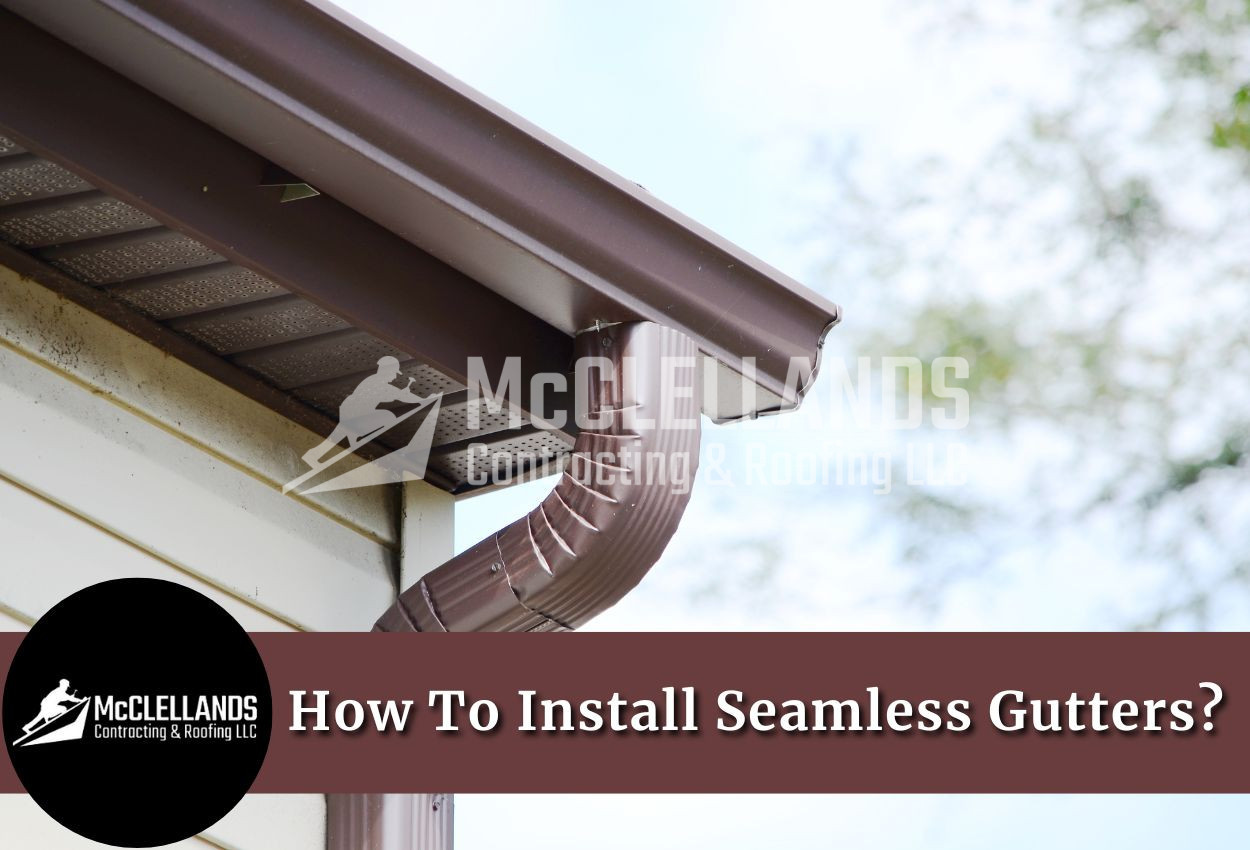Imagine yourself in the vibrant city of Pittsburgh, renowned for its stunning skyline and rich industrial heritage. As you look up, you may see metal roofs adorning some of the buildings, reflecting the vibrant energy that courses through its streets. Amidst this architectural brilliance, there's an overlooked, yet vital roofing component diligently performing its duty: the gutter system.
Metal roofing systems are favored for their durability, energy efficiency, and longevity. However, it's crucial to ensure that the gutter system on a metal roof is properly installed to maintain its functionality and protect your property from water damage. An efficient gutter system prevents water from pooling around your roof and home, preserving the integrity of your roofing structure and foundation of your home.
In this blog post, we will delve into the various types of gutters available to help you choose the one that will best protect your home and building. So, let's get started.
Three Main Types of Gutters
A metal roof requires a reliable drainage system for efficient water management and roof protection. Let's explore these three distinct gutter varieties that effectively divert water away from a building:
1. K-Style Gutters
K-style gutters, also known as ogee gutters, are a common type of gutter system. When viewed from the side, they resemble the letter K with a flat base and rounded corners. Unlike standard half-round gutters, K-style gutters have an innovative design that allows them to store significantly more water.
These gutters are typically made from aluminum, steel, or vinyl and come in different widths, with 5 and 6 inches being the most common. Rainwater is collected by the gutters along the eaves of a roof and channeled to downspouts.
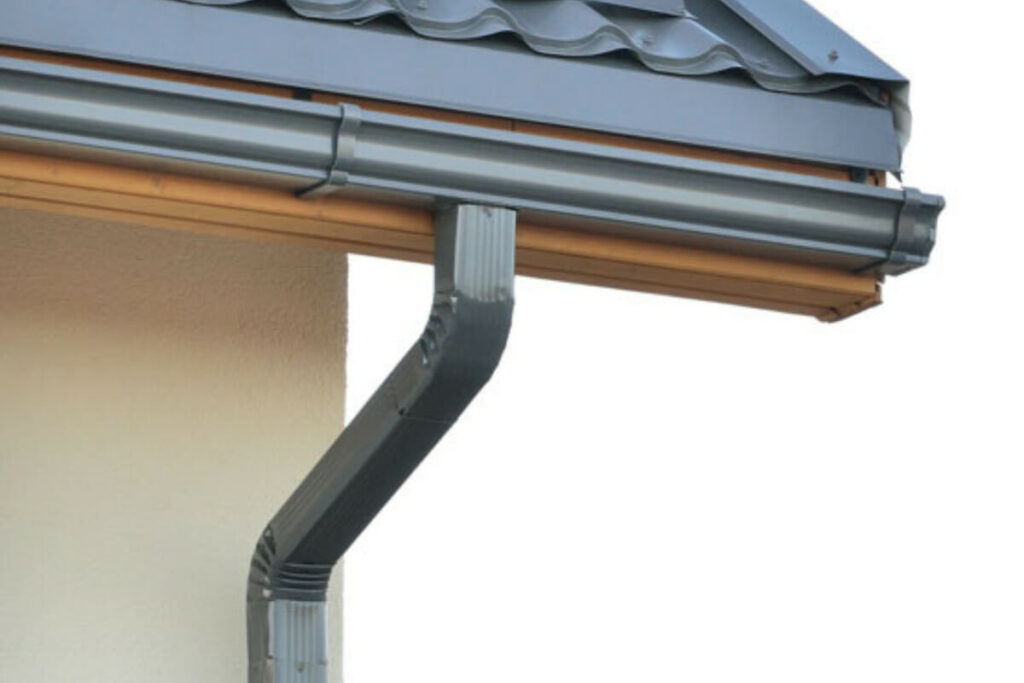
Suitable Applications
- Residential homes: K-style gutters are commonly used for residential properties due to their aesthetic appeal and functionality.
- Commercial buildings: They are also suitable for commercial buildings, such as offices, retail spaces, and industrial facilities, as they can handle larger volumes of water.
Things to Keep in Mind
- Maintenance: K-style gutters can accumulate debris over time due to their multiple crevices and corners. Regular cleaning and maintenance are necessary to prevent clogging and ensure proper water flow.
- Style Compatibility: The angular design of K-style gutters may not complement all architectural styles. It's important to consider the overall aesthetics and compatibility of the gutter system with the building's design.
- Installation Considerations: Proper installation requires careful measurements, leveling, and alignment to ensure optimal performance. Improper installation can lead to water overflow, leaks, and other issues.
- Cost: The cost of K-style gutters depends on factors such as the material used, the length and size of the drain, and the manufacturer.
2. Half-Round Gutters
Traditional gutter systems often feature half-round gutters, which have a semicircular shape. Unlike K-style gutters with flat bottoms and curved edges, half-round gutters are rounded and resemble a half-circle. They can better withstand the elements and offer long-lasting performance.
Common materials for half-round gutters include aluminum, copper, or galvanized steel. While the common width of this type of gutter ranges from 4 to 8 inches, other sizes are also available. Half-round gutters are attached along the eaves of a roof to collect runoff and channel it to the downspouts.
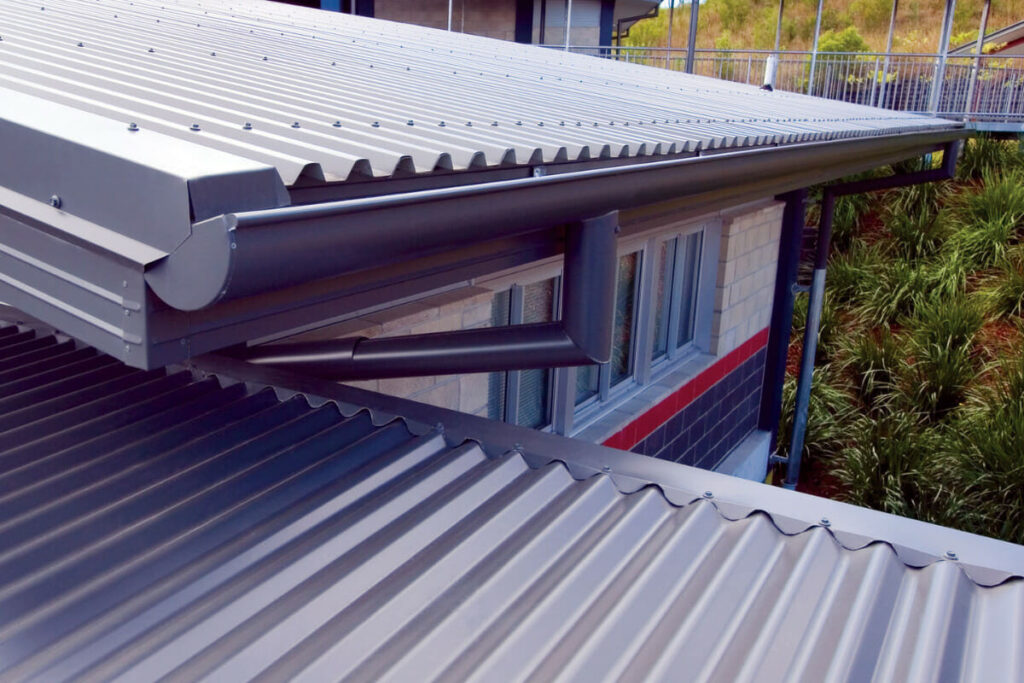
Suitable Applications
- Historic Buildings: Half-round gutters are often used on historical buildings to preserve their architectural authenticity. The classic design of these gutters complements the charm and character of such structures.
- Residential Homes: They are also suitable for residential homes, especially those with a traditional or vintage architectural style. They add a touch of elegance and enhance the property's overall aesthetic appeal.
Things to Keep in Mind
- Maintenance: Half-round gutters are easier to clean and maintain. The rounded channel reduces the need for cleaning by reducing debris accumulation.
- Installation Challenges: Installing these gutters may be more challenging than other designs. They require proper alignment and support to prevent sagging and leaking.
- Durability and Performance: Half-round gutters prevent clogs and blockages, ensuring proper water flow and reducing the risk of water damage. They can withstand the elements and offer long-lasting performance.
- Cost: The premium quality and durability of materials used in half-round gutter manufacturing contribute to their higher cost.
3. Box Gutters
Box gutters, also known as square gutters, are characterized by their rectangular or square shape. Unlike half-round and K-style gutters, they are flat and vertical.
Box gutters are custom-made to fit the dimensions of the roof and are constructed from materials such as aluminum, steel, and copper. They collect rainwater and channel it to downspouts along the building's eaves.
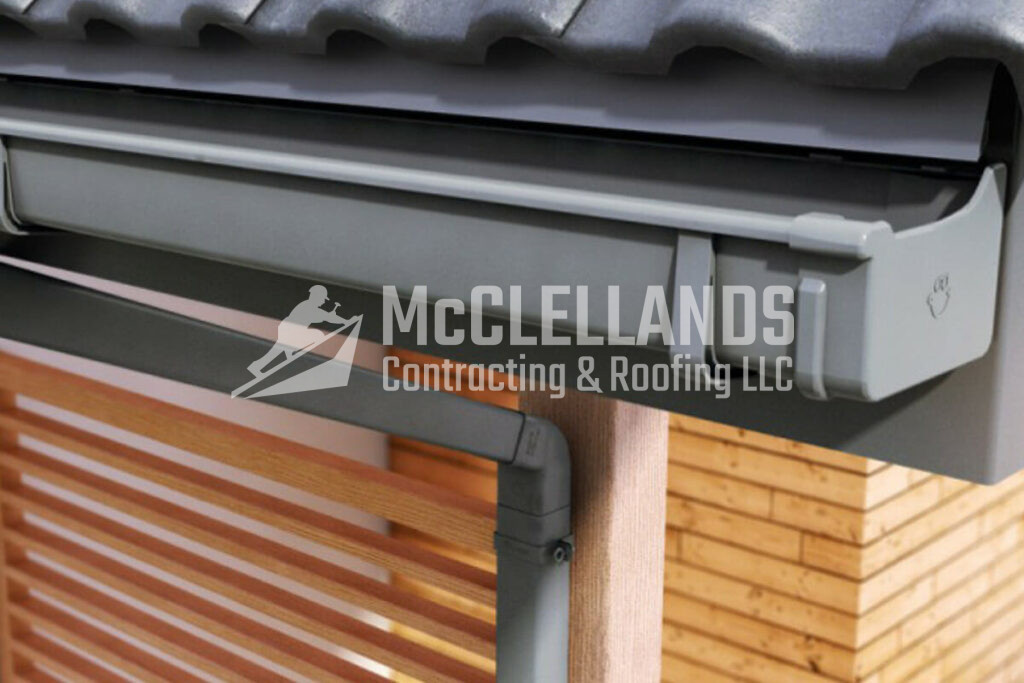
Suitable Applications
- Commercial Buildings: Box gutters are commonly used on commercial buildings, including warehouses, factories, and large-scale structures.
- Custom Residential Homes: They are also suitable for custom-designed residential homes. Their customizable nature allows them to be adapted to fit unique architectural features and roof designs.
Things to Keep in Mind
- Installation and Maintenance: Box gutters require precise installation and ongoing maintenance. Proper alignment, support, and sealing can prevent leaks and water damage. Regular cleaning and inspection are necessary to prevent clogging and ensure optimal performance.
- Customization and Adaptability: Box gutters can be customized to fit irregular roof shapes, ensuring proper fit and water collection.
- Cost: Due to their customization and capacity, box gutters are more expensive than standard gutters.
- Durability: Box gutters are known for their durability and longevity. They are designed to withstand harsh weather conditions and effectively manage water runoff from the roof.
Leading Gutters Manufactures
Below is a list of some of the leading gutter manufacturers across the country.
- Englert Inc.
- Berger Building Products
- Spectra Metals
- Senox Corporation
How Do You Choose The Best Gutters For Your Metal Roof?
Choosing the right gutter for your metal roof is a complex process. We aim to assist you with every aspect to ensure you make an informed decision about gutter installation. Here are some key considerations:
Material
Select sturdy gutters that complement the longevity of a metal roof. Common materials for gutters include aluminum, copper, and steel. While copper gutters are more expensive, they offer enhanced aesthetics and durability. You’ll also find that steel gutters require regular maintenance despite their ability to withstand severe weather and rust. Consider your budget, local weather, and preferred look when choosing the material for your gutter system.
Size and Style
Consider the size and style of the gutters you plan to install. The size directly affects a gutter’s capacity to handle water, with larger gutters able to handle greater volumes of water. Additionally, ensure that the gutter style complements the design of your roof, enhancing its visual appeal. If your current gutters are inadequate, upgrading to a larger size, such as 6 inches, may be necessary.
Durability
Different gutter materials have varying levels of durability. Consider the resistance of the chosen material to factors like hail and severe weather conditions. Robust materials can withstand impacts without deformation or cracks.
Ease of Installation
When choosing gutters for a metal roof, consider the ease of installation. The gutter should fit seamlessly against the roof, ensuring a secure attachment. If your roof has a complex design, installing a gutter system may require the expertise of a professional.
Cost
Consider the total cost of the gutter system, including the material cost and the cost of labor for installation. For instance, if you choose a seamless gutter design, the installation may take more time and labor, therefore costing you more.
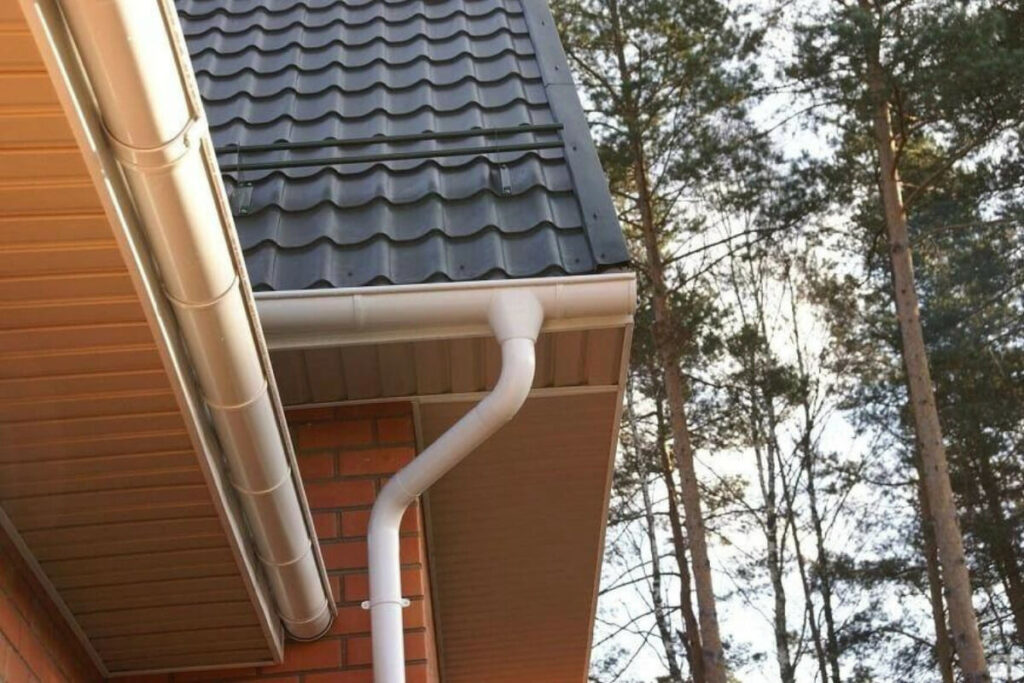
Why Is It Important To Have Gutters For Metal Roofs In Pittsburgh?
Having gutters for metal roofs in Pittsburgh is crucial due to the region's weather patterns. Here are some reasons why gutters are essential for metal roofs in Pittsburgh:
Heavy Rainfall
Pittsburgh experiences a significant amount of rainfall throughout the year. Gutters channel rainwater away from the roof and foundation, preventing issues such as foundation damage, basement flooding, and water damage to the property.
Snowfall and Ice
Pittsburgh receives substantial snowfall during the winter. Gutters help control the melting snow by allowing water to drain away from the roof properly. This prevents water from seeping under metal roof panels, which could cause leaks and structural damage when ice dams form.
Soil Erosion
Pittsburgh's hilly topography requires effective water management to prevent soil erosion. Gutters collect precipitation and channel it away from the building's foundation, protecting the soil around your home and preventing erosion.
Protecting Building Components
Gutters play a vital role in protecting various components of a building, including the siding, windows, doors, and exterior walls. By directing water away from these areas, gutters help prevent water stains, rot, and deterioration of building materials, preserving both aesthetics and structural integrity.
Foundation Preservation
Properly functioning gutters ensure rainwater is directed away from the building's foundation. This helps prevent water from seeping into the foundation, reducing the risk of foundation cracks, shifting, and other costly structural issues.
Basement and Crawl Space Protection
Pittsburgh's high precipitation levels can lead to excess moisture in basements and crawl spaces without proper water management. Gutters prevent water from pooling around the foundation and infiltrating these areas, reducing the risk of mold growth, water damage, and associated issues.
Final Thoughts
Knowing more about the main types of gutters available for metal roofs, and evaluating the relevant factors, helps homeowners make an informed decision during the selection process and achieve optimal performance and protection. By choosing the right gutter type, property owners can enhance the functionality, aesthetics, and longevity of their metal roofs while effectively managing water runoff and preserving the integrity of their buildings.
If you require gutter repair, replacement, and installation services, don't hesitate to contact McClellands Contracting and Roofing LLC. Our team of experts will be more than happy to assist you in maintaining and protecting your home. Schedule a consultation today, and let us help with your metal roofing needs.

